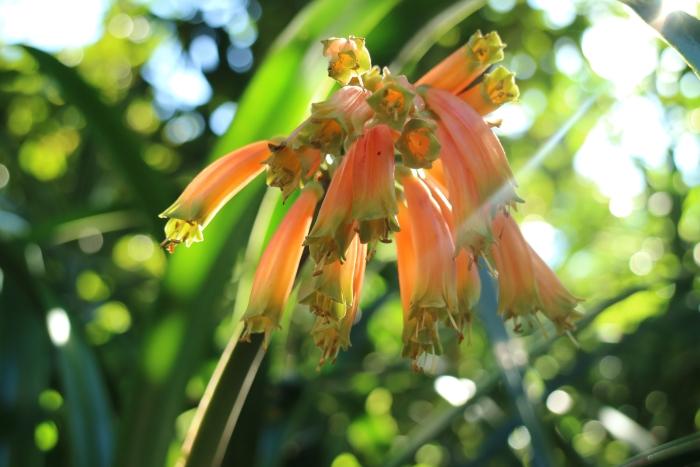
Canon EOS M3 mirrorless camera
A highly capable mirrorless camera that can work with regular DSLR lenses (via an adapter)
Pros
- Picture clarity and colours
- Useful live view and great screen
- Intuitive controls and fun to use
Cons
- Handgrip is shallow
- Dials hard to move
-
Price
$ 899.00 (AUD)
It’s not often one thinks of Canon when considering mirrorless cameras, but the company’s EOS M3 is a worthy contender against the likes of Olympus, Panasonic, Samsung, and Sony, which are perhaps the ‘go to’ brands for this category.
The EOS M3 represents a camera category that tries to do away with bulk and excessive size, offering instead plenty of photographic capability and flexibility in a body that can be more easily transported than a digital SLR. At the same time, it aims to appease existing users of Canon’s digital SLR ecosystem by offering a means to use their digital SLR lenses with the smaller body. Put simply, it’s a versatile camera, and one that we think is a ton of fun to use.
Many elements come together to make for an enjoyable overall user experience. From the LCD touchscreen’s hinged mount, to the actual quality of the screen; from the manual controls, to a live view of exposure changes right there on the screen. It has the right combination of features that we think will satisfy both amateurs and professionals (those professionals who want a small shooter to carry around when the DSLR isn’t feasible).
On the technical side of things, the Canon EOS M3 has an APS-C sized CMOS sensor with 24 megapixels of resolution, hybrid focusing (contrast and phase detection), and a maximum shutter speed of 1/4000th of a second. An EOS M mount sits at the front of the 24-megapixel sensor, allowing for a range of different EOS M lenses to be installed, as well as a mount adapter that can accommodate EOS EF lenses from DSLRs (the Mount Adapter EF-EOS M costs about $145).
The use of big lenses on the small EOS M body can make the camera feel rightfully odd; we found ourselves using the 18-55mm EOS M kit lens for the majority of our shooting, especially while out and about, leaving the big lenses at home, but the ability to shoot with the DSLR lenses certainly is appreciated.
With its standard, 18-55mm kit lens, you can achieve a good range of results when it comes to shooting portraits and landscapes. It’s a lens that has the ability to render an out-of-focus background with a circular bokeh pattern, and a tremendous overall blur. In some of our photos of flowers, the background looked more like a painting, taking on an unnatural feel, but presenting an exciting look nonetheless.


We used the EOS M3 primarily in manual mode, playing with the aperture, shutter, and ISO values to get the look and feel we wanted in our shots. The best part of this was that all the changes made to the exposure could be seen on-the-fly through the LCD screen -- even while outdoors on a bright day. We could preview the light in the shots prior to hitting the shutter button, and we didn’t even need to press halfway in order for the camera to focus. By default, it’s set to autofocus continually, and this means you can spend all of your time framing your subject, and then hitting the shutter at the perfect moment.
It’s this live view and live focusing that can make the camera a lot of fun to use. You can take complete control of the exposure and with confidence capture what you are seeing on the screen. Furthermore, you can get different angles on your subjects thanks to the hinges on the LCD screen. The screen extends out from the body and allows for tilting up and down, making it comfortable to shoot from the hip or from above your head. It also extends upwards 180-degrees so that selfies can be taken.
But more than that, it’s a strong hinge with a generous extension and you can hold the camera from it in a way that allows you to get some wonderful angles that would perhaps be off limits to a bigger, heavier camera. We had success when holding the camera in a way that allowed us to get under plant canopies, and well above flower beds, for example. We could see the screen quite well in these instances for the purpose of framing the shot, whereas we might have had to shoot blind on other cameras.


Then there is the way the camera allowed us to play with light. We could make great adjustments to the ISO sensitivity, and to the shutter speed, to accentuate dark areas or make rays of light hit our subject from a particular angle, all by playing with the controls and seeing the end results live on the screen. For a few shots where we didn’t know exactly where we should point the camera to get the best lighting effect, the live view (and the high quality of the screen) was the perfect tool.




Manual focusing became an easier task once we switched on the focus peaking feature, which placed a highly visible orange highlight on all the elements in the frame that were in focus. Even without it, though, it was possible to see what we were focusing on clearly on the screen. We didn’t miss having a viewfinder on this camera because of the quality of the screen, and it was easy to tap on the area of the screen that we wanted to be the focal point for our shots.


However, it was more awkward to use the screen when a heavier, DLSR lens was attached. We instinctively wanted to put the camera to our face when the EF adapter and a bigger lens were on it (such as a 15-85mm), because it just felt easier to keep the camera steady in this way. An electronic viewfinder for the EOS M3 costs $299, which is a hefty investment.
For the most part, we didn’t use this camera like a regular camera. We often held it in such a way that our thumb (rather than index finger) rested on the shutter button, and this allowed the camera body to rest easier in our palm with our little finger under the camera body. We preferred it to holding the camera in a traditional fashion, primarily because the handgrip is a little too shallow for our liking. Of course, it was also a consequence of the subjects we were shooting being, for the most part, low to the ground.
Other physical features that we’ll note are the stiffness of the mode and exposure bias dials. Both of these are hard to manipulate. Canon has made them this way so that they can’t be inadvertently moved off their spot, and hasn’t included ‘locks’ like on some DSLRs because that would make the body a little bulkier. For the most part, the control layout is good, though. The ring on the back and the ring around the shutter are used to change the exposure settings, and the power button at the top is flush with the body so that it, too, can’t be inadvertently pressed.
Like most modern cameras, the EOS M supports the use of Wi-Fi for remote shutter operations and for transferring photos to a mobile device and then uploading them from there to social media, and you also get Full HD video recording, and scene modes.
We had a good time using this camera during our review period, and happily recommend it if you’re after a mirrorless model. It’s a camera that we think is easy to understand, and its image quality is rather impressive. Photos were clear and well defined, and the colours and dynamic range that it captured in JPEG mode made for great instant uploads to our Flickr account.
More sample photos




Related content
• Canon PowerShot SX530 HS big zoom camera
• Samsung NX500 mirrorless camera
• A simple guide to mirrorless cameras
Brand Post

Most Popular Reviews
- 1 Dell U3223QE review: A winning debut for an IPS Black monitor
- 2 HP Spectre x360 16 review: The right 2-in-1 at the wrong time
- 3 Acer K242HYL review: An affordable monitor for any occasion
- 4 GeForce Now review: You bring the games, Nvidia streams the hardware
- 5 Asus ProArt PA279CV monitor review: The go-to for content creators on a budget
Latest News Articles
- Apple offers 6 months free Apple Music, Keynote holiday greeting card templates
- Adobe expands Creative Cloud M1 support, claims over 80% better performance than Intel
- GoPro delivers Quik solution for videos and photos
- Got a GoPro Hero 8? You can use it as a webcam for your Mac
- Canon embolden mirrorless offering with EOS R5 and R6
Resources
Macworld
What's new, plus best mac-related tips
and tricks

Business Centre
The latest business news, reviews, features and whitepapers

Videos
Watch our video news and reviews from around the world

Guides
Comprehensive buying guides, features, and step-by-step articles

PCW Evaluation Team
Pedro Peixoto
Aruba Instant On AP11D

Set up is effortless.
Cate Bacon
Aruba Instant On AP11D

The strength of the Aruba Instant On AP11D is that the design and feature set support the modern, flexible, and mobile way of working.
Dr Prabigya Shiwakoti
Aruba Instant On AP11D

Aruba backs the AP11D up with a two-year warranty and 24/7 phone support.
Tom Pope
Dynabook Portégé X30L-G

Ultimately this laptop has achieved everything I would hope for in a laptop for work, while fitting that into a form factor and weight that is remarkable.
Tom Sellers
MSI P65

This smart laptop was enjoyable to use and great to work on – creating content was super simple.
Lolita Wang
MSI GT76

It really doesn’t get more “gaming laptop” than this.
Featured Content
- Which Lenovo Laptop Should I Buy?
- Every TV in Samsung's 2022 line-up: OLED, Neo QLED and more!
- Top 10 best Android and Apple phones for under $600
- Everything you need to know about Smart TVs
- What's the difference between an Intel Core i3, i5 and i7?
- Laser vs. inkjet printers: which is better?










